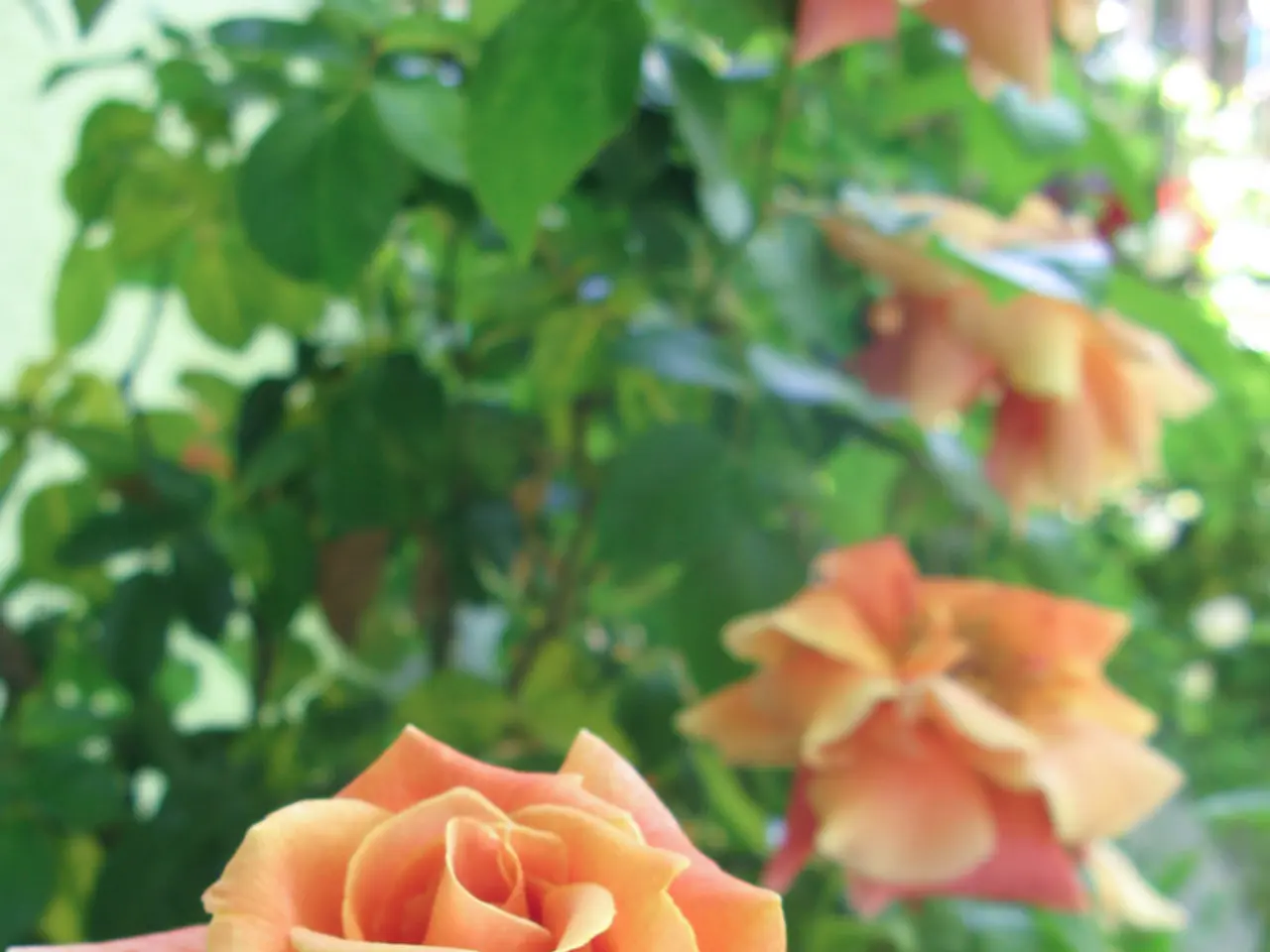Strategies for Extending Rose Bloom Duration, Even in Scorching Temperatures
Growing Healthy Roses: A Guide for Gardeners
Roses, the classic symbol of beauty and love, are more resilient than you might think. With just a few simple tips, you can grow healthy, blooming roses in your garden.
Sun Exposure Roses generally require at least 6 hours of direct sunlight per day for optimal growth. Some varieties tolerate partial shade, but full sun is best to promote blooming and reduce disease risk. In very hot climates, providing some afternoon shade can protect roses from sunburn on stems and petals.
Soil Type Roses prefer well-drained soil with a slightly acidic to neutral pH around 6.5. The soil should be rich in organic matter, so incorporating compost or well-rotted manure before planting is recommended. Avoid planting where roses have struggled before to prevent disease from lingering in the soil.
Watering Keep the soil consistently moist but not waterlogged. Deep watering every 1-2 weeks, soaking for 1.5–2 hours, encourages deep root growth. Container-grown roses may require more frequent watering, especially in summer heat.
Pruning Perform hard pruning in late winter or early spring to maintain plant shape, remove dead wood, and encourage vigorous new growth. Deadhead spent blooms regularly to promote continuous flowering and spray with preventative treatments after pruning to combat fungal diseases like black spot.
Spacing Provide plenty of space between plants to ensure good air circulation, reducing humidity and fungal disease pressure. Avoid overcrowding to reduce competition for moisture and sunlight.
Additional Tips Mulching around the base of roses with natural materials like lucerne hay, sugarcane mulch, or straw retains moisture and suppresses weeds. However, avoid pine bark mulch, which can be detrimental. Regular fertilization in spring, summer, and autumn with balanced or organic rose fertilizers supports strong growth and flowering.
Shade and Protection Creating shade for roses can help protect them from the summer heat. Vining plants or pergolas can be used, or umbrellas in light colors or reflective silver/white can provide shade. Pruning also allows for better light penetration and air circulation in roses.
Americans purchase approximately 1.2 billion cut roses annually, and gardeners worldwide buy about 150 million rose plants each growing season. With these simple tips, you too can grow beautiful roses in your garden. Happy gardening!
[1] American Rose Society. (n.d.). Rose Care Basics. Retrieved from https://www.roses.org/rose-care-basics
[2] The Spruce. (2021). How to Grow Roses: A Complete Guide. Retrieved from https://www.thespruce.com/growing-roses-1412337
[3] The Old Farmer's Almanac. (2021). Rose Care: How to Grow Roses. Retrieved from https://www.almanac.com/gardening/rose-care
[4] Bonnie Plants. (2021). Growing Roses: A Beginner's Guide. Retrieved from https://www.bonnieplants.com/advice/growing-roses-a-beginners-guide
[5] The Rose Society of New South Wales. (n.d.). How to Grow Roses. Retrieved from https://www.rosesnsw.org.au/how-to-grow-roses/
- Incorporating organic matter such as compost or well-rotted manure into the garden soil can help roses grow healthier, as they prefer well-drained soil with a slightly acidic to neutral pH.
- Regular fertilization in spring, summer, and autumn with balanced or organic rose fertilizers supports strong growth and flowering in roses.
- Mulching around the base of roses with natural materials like lucerne hay, sugarcane mulch, or straw retains moisture and suppresses weeds, promoting healthy rose growth.
- Creating shade for roses can help protect them from the summer heat, and this can be achieved by using vining plants, pergolas, or umbrellas in light colors or reflective silver/white.





